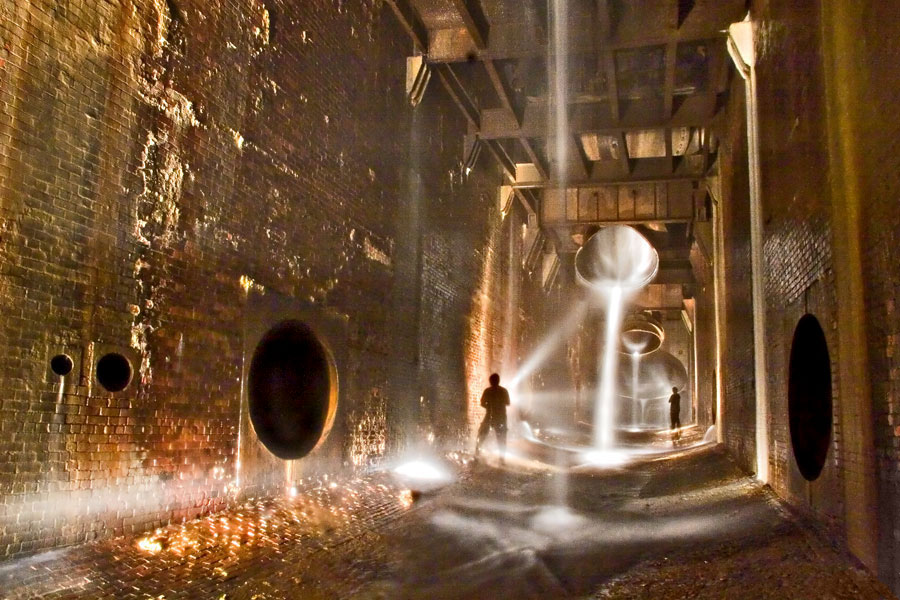
Boing Boing mentions Rosalind Williams today, MIT professor of history of science and author of Notes on the Underground: An Essay on Technology, Society, and the Imagination. "The book explores both real and imaginary undergrounds, from the building of sewers and subways to archaeological digs to the writings of Jules Verne and HG Wells. This year, MIT Press has published a revised edition of Notes On The Underground."
Williams was interviewed by Cabinet this summer celebrating the new edition of her book. Here's a bit:
In the nineteenth century, however, another type of story began to be written. Instead of being a place to visit, the underground became a place to live. Instead of being discovered through chance, an underworld could be constructed through deliberate choice. Jules Verne’s Journey to the Center of the Earth (1864) is still an imaginary subterranean journey. Far less famous, but at least as intriguing, is another book he published thirteen years later, Les Indes Noires, which depicts a permanently functioning underground society. This second type of underground tale emerges along with modern science and technology. As scientific knowledge advanced, the idea of discovering a hidden inner world became less and less credible. On the other hand, as technological prowess advanced, the idea of building an inner world became more and more credible.
BLDG Blog ran a post last week on "Mysterious Chinese Tunnels", supposedly built in the Pacific Northwest to kidnap people for the purposes of white slavery deportation to China. A bit:
Subterranean space here clearly exists within an interesting overlap of projections: fantasies of race, exoticism, and simply subconscious fear of the underworld. White Europeans had expanded west all the way to the Pacific Ocean – only to find themselves standing in a swamp, on earthquake-prone ground, with a "mysterious" race of Chinese dock workers tunneling toward them through the earth, looking for victims... It's like a geography purpose-built for H.P. Lovecraft, or something straight out of the work of Jeff VanderMeer: down in the foundations of your city is a mysterious network of rooms, excavated by another race, through which unidentified strangers move at night, threatening to abduct you.
It's urban historical anthropology by way of Jean Cocteau – or Sigmund Freud.
One of the best underground books is Neil Gaiman's Neverwhere, a fantasy novel set below London that I love to recommend to new Gaiman fans, and also look for Ekaterina Sedia's The Secret History of Moscow in which all sorts of folklore is blended in an underworld setting that dazzled me earlier this summer. (More on both of those via Endicott Studio.)

No comments :
Post a Comment
Note: Only a member of this blog may post a comment.